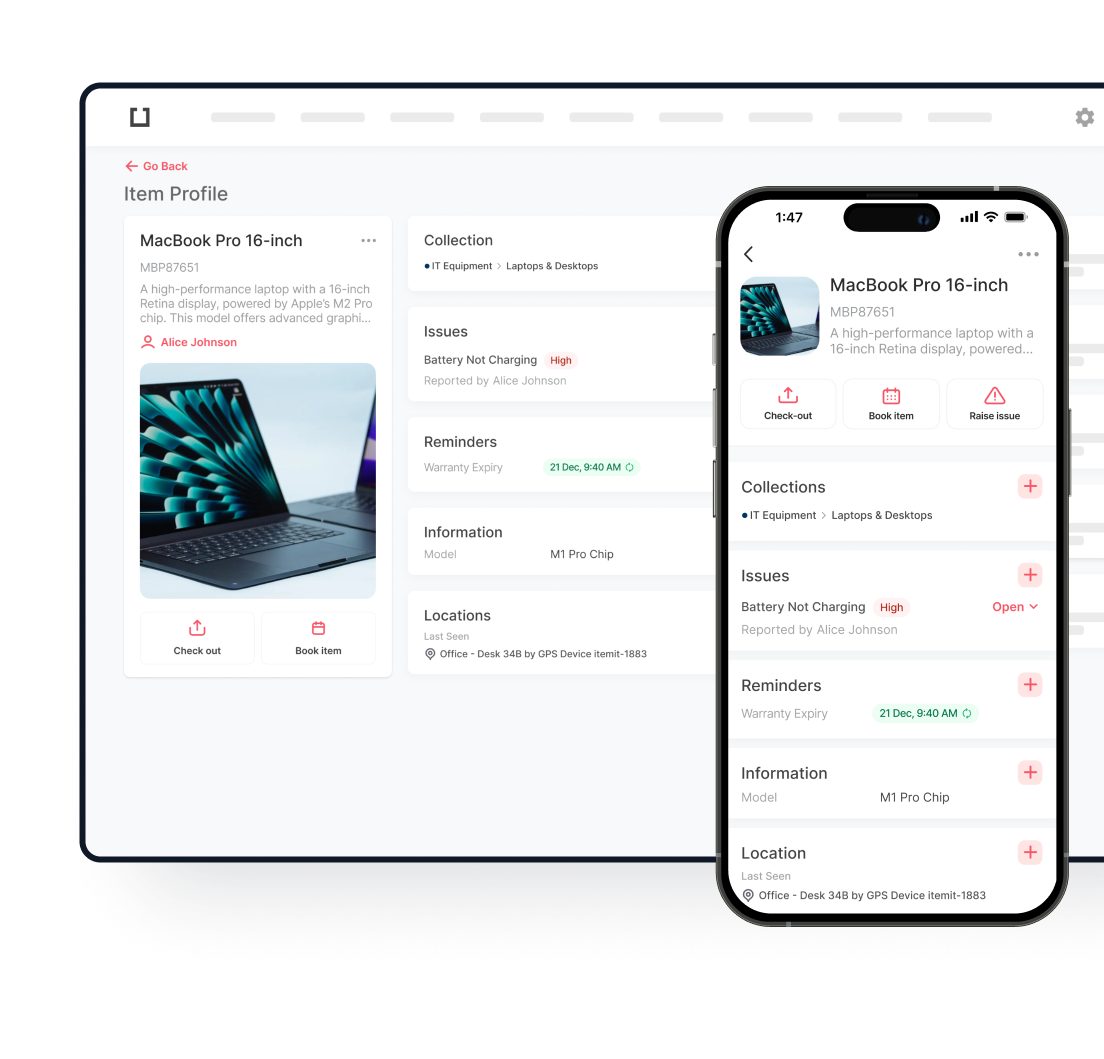
Effective company operations depend mostly on good inventory control. Without a suitable system to tack assets, businesses run expensive risks, including overstocking, understocking, or differences between actual stock and recorded levels. The perpetual inventory system is among the most strong and dynamic ways modern inventory management can be done. Unlike conventional approaches, it offers real-time updates on stock levels, guaranteeing a continuous flow of accurate inventory data.
This extensive guide will fully explore everything from its basic definition to its accounting features, how technology fits into the perpetual inventory system, and the benefits it presents over periodic inventory approaches.
Definition and Basic Concept of Perpetual Inventory
An asset audit is a structured process to verify the existence, condition, and value of a company’s assets. It serves as a critical tool for ensuring that financial records reflect the firm’s array of assets. It involves understanding what is really held by a business and that all those assets work to their best abilities.
The asset audit meaning goes beyond mere inventory. It identifies inefficiencies, potential risks, and examines whether all the assets are properly accounted for in the financial statements. This is where a good asset audit may point out inefficiencies — be it underutilised equipment or record discrepancies — that can actually generate cost savings and better asset management.
However, taking an asset audit can be challenging. How to maintain a fixed asset register in the right way? Such challenges include accounting and keeping track of assets spread over several locations, ascertaining the value of an asset that is sure to have depreciated over the years, and updating all records. Businesses should, therefore, adopt a well-structured approach, utilising modern tools that will make auditing less of a chore. Knowing how to audit assets effectively can make all the difference in maintaining accurate financial records and making sound business decisions.
How to Conduct an Asset Management Audit: A Detailed Checklist

Realising how companies remain competitive and responsive in the modern market depends on knowing what is perpetual inventory. An inventory tracking system known as a perpetual inventory system constantly updates inventory records in real-time, immediately reflecting events, including sales, returns, or new stock acquisitions. This contrasts sharply with periodic inventory systems, in which inventory updates occur just at designated intervals—such as at the end of the month or year—when a physical inventory count is conducted.
Under a perpetual inventory system, the inventory data is continuously updated, so enabling managers and business owners to view current stock levels at any one moment without having to stop for protracted physical counts. For instance, the system instantly changes the accessible inventory if a good is sold in a retail store. The same occurs when fresh stock arrives from vendors; it is automatically entered into the system, and the available stock is modified.
Conversely, periodic inventory systems are relatively less sensitive. These systems track inventory events that are not in real-time. Rather, they depend on inventory counts spaced at set intervals. Mainly if there is theft, damage, or tracking mistakes over the period, this approach can cause differences between the recorded and actual inventory levels. Companies using periodic inventory may not find these problems until the following inventory count. Thus, their response to inventory needs in real-time becomes more difficult.
Perpetual Inventory vs. Periodic Inventory: A Comparative Overview
The key differences between perpetual inventory systems and periodic inventory systems revolve around timing, accuracy, and labor.
| Perpetual Inventory | Periodic Inventory |
| Updates inventory in real-time. | Updates inventory periodically (e.g., monthly). |
| No need for full physical counts. | Requires regular physical counts. |
| Immediate reflection of sales and returns. | Adjustments are only made after counting. |
| Requires advanced technology integration. | Can function without sophisticated systems. |
| More accurate financial and stock records. | Prone to discrepancies until counted. |
How the Perpetual Inventory System Works
A perpetual inventory system is a technical arrangement whereby every inventory change is tracked as it occurs. But perpetual inventory means more than just tracking sales and purchases; it’s a complete, technologically driven process, automated and streamlined method. Modern systems automatically record stock movements using barcode scanning, point-of-sale (POS) systems, and Radio Frequency Identification (RFID).
Role of Technology in Perpetual Inventory
Among the most transforming technologies available in contemporary inventory control is RFID. From manufacture to storage and finally sales, RFID tags let companies automatically monitor goods across the supply chain. Every good has an RFID chip inside that stores a distinct product ID. Whether the product is transferred from a warehouse or a retail outlet, RFID scanners record the movement, and the system changes the inventory.
For a big warehouse where hand counting would be labour-intensive and prone to error, RFID asset tracking provides instantaneous updates to inventory levels. This offers a flawless approach to tracking current stock and removes variances brought about by human mistakes.
Another basic feature of perpetual inventory systems is barcode scanning at the point of sale. The system changes the inventory each time a cashier scans an item at check-out. The information from these transactions is then compiled into reports that offer inventory management insights, including which items are overstocked, which ones are fast-selling, and what needs to be reordered.
Advantages of Perpetual Inventory Technology
There are several key advantages of perpetual inventory technology, such as:
- Real-time accuracy: Businesses can trust that their stock levels are up-to-date at all times, allowing for faster decision-making.
- Increased productivity: Automated processes reduce the need for time-consuming manual stock checks, freeing up employees to focus on other tasks.
- Reduced human error: By automating inventory adjustments through technology like RFID, businesses minimise the risk of miscounting, which is a common issue in periodic inventory systems.
- Improved forecasting: Real-time data on inventory levels allows businesses to more accurately forecast demand and adjust stock accordingly.
- Faster reordering: The system can trigger automatic reorders when stock falls below a certain threshold, preventing stockouts and ensuring continuous product availability.
Accounting Aspects of Perpetual Inventory

The perpetual inventory method is intimately linked to a company’s accounting procedures rather than only monitoring goods in a warehouse or store. The system connects with accounting systems so that important financial records, including the balance sheet and income statement, may be updated instantly.
Inventory and Financial Statements
Perpetual inventory systems continuously calculate COGS, unlike periodic inventory systems, whereby the cost of goods sold (COGS) is computed only following a physical count. The system automatically changes COGS in real time each time an item is sold, reflecting the actual company financial situation at any one moment. For businesses that need accurate and timely financial reports, this is absolutely vital.
For example, the system instantly reduces 100 units of a company’s product sold from current stock and adds the relevant value to the COGS shown on the income statement. This integration guarantees that financial data and inventory levels stay in unison.
How the Perpetual Inventory System Formula Works
The perpetual inventory system formula is relatively simple but effective:
Beginning inventory + Purchases – Sales = Ending inventory
By tracking these variables in real time, businesses can generate an inventory perpetual report at any time, providing insight into how much inventory is left, what has been sold, and what still needs to be ordered.
Example of Perpetual Inventory Accounting
Here’s an illustration of a perpetual inventory system: When selling a sofa for $1,000, a furniture store employs a perpetual inventory system. The inventory system automatically removes one sofa from its records when the sale is finished and concurrently changes the store’s balance sheet and income statement. The immediately reflected COGS for that specific sofa guarantees always current financial records for the store.
This degree of integration, particularly helpful during audits or when preparing financial reports for stakeholders, gives companies unprecedented control and insight into their inventory levels and financial situation.
Advantages of Adopting a Perpetual Inventory System
There are numerous advantages of perpetual inventory systems for modern businesses. Some of the most important benefits include:
1. Real-Time Data and Decision-Making
One of the biggest benefits of a perpetual inventory system is access to real-time inventory data. This information guides managers and entrepreneurs in decisions on restocking, sales campaigns, and new product introductions. Early understanding of stock levels lets businesses respond quickly to evolving market conditions.
2. Reduction in Discrepancies
Differences between recorded inventory and actual stock are common in periodic inventory systems. Still, using the perpetual inventory system reduces differences since every transaction automatically updates inventory. This greatly lowers the possibility of human mistake or theft going undetectable until the following physical count.
3. Impact of Sales on Assets
One often-asked question is, Using the perpetual inventory system, what is the effect of a sale of inventory on assets? In other words, every sale directly affects the company’s assets as well as its inventory levels. The system reduces inventory count and changes the company’s assets on the balance sheet upon product sale. Additionally, shifting the COGS on the income statement is the cost related to the sold item, providing a real-time view of the company’s financial state.
4. Automatic Recording of Transactions
Manual input is less necessary when transactions are entered using a perpetual inventory system. Since human involvement is so much reduced, this automation improves efficiency and reduces mistakes. Whether it’s a purchase of new stock, a sale, or a return, the system automatically updates records to guarantee correct data availability throughout departments.
5. Integration with Supply Chain Management
One other major benefit is the system’s flawless integration with supply chain management software. From raw materials to the completed goods delivered to consumers, this facilitates better tracking of product movement throughout the whole supply chain. By tracking inventory levels at several phases, companies can guarantee timely restocking and reordering, preventing both overstocking and stockouts.
Advanced Features of Perpetual Inventory Systems

Beyond basic functionality, perpetual inventory systems offer advanced features designed to enhance inventory management even further. Some of these features include:
Forecasting and Analytics
Many perpetual inventory systems feature built-in analytics and forecasting tools that let companies project demand based on past performance, like fixed asset software. These projections help maximise Inventory levels and lower the possibility of understocking or overstocking. The system can examine consumer behaviour trends and propose optimal stock levels for several goods.
Multi-Location Inventory Management
Perpetual inventory systems let companies running several sites control inventory across all of them from a central dashboard. This function makes better coordination between stores and warehouses possible, guaranteeing that goods are always available where they are most needed.
Integration with Other Business Systems
Many times, perpetual inventory systems interact with other core business systems, including enterprise resource planning (ERP) systems and customer relationship management (CRM) tools. This guarantees departmental sharing of inventory data, facilitating a more all-encompassing approach to corporate operations.
Final Notes
Offering real-time updates, enhanced accuracy, and flawless connection with accounting and supply chain systems, the perpetual inventory system is a great tool for companies of all kinds. Modern technologies like RFID and barcode scanning let companies track stock levels automatically and cut many of the inefficiencies connected with periodic inventory systems.
Clearly, companies can lower mistakes, make quick decisions, and keep better control over their financial records and Inventory levels. Modern inventory management now depends critically on the perpetual inventory system since it can interact with many other business systems.
Changing to a perpetual inventory system is not only necessary but also a must for businesses trying to remain competitive in today’s fast-paced market.

Try itemit
Choose a better way to track
your assets.
Start your free 14-day trial now!

Keep Learning
itemit Blog
Tips, guides, industry best practices, and news.
The Ultimate Guide to RFID Inventory Management
Discover the beginner’s guide to RFID inventory management technology. Learn how to improve accuracy, streamline stock tracking, and boost efficiency today!
A Guide to the Different Types of Inventory Management
Discover the different types of inventory management systems and how each can improve efficiency and accuracy in managing your business inventory.
Understanding the Inventory Tracking Process and Its Importance
Learn about the inventory tracking process and its importance. Discover how it helps improve efficiency, accuracy, and overall business management.


